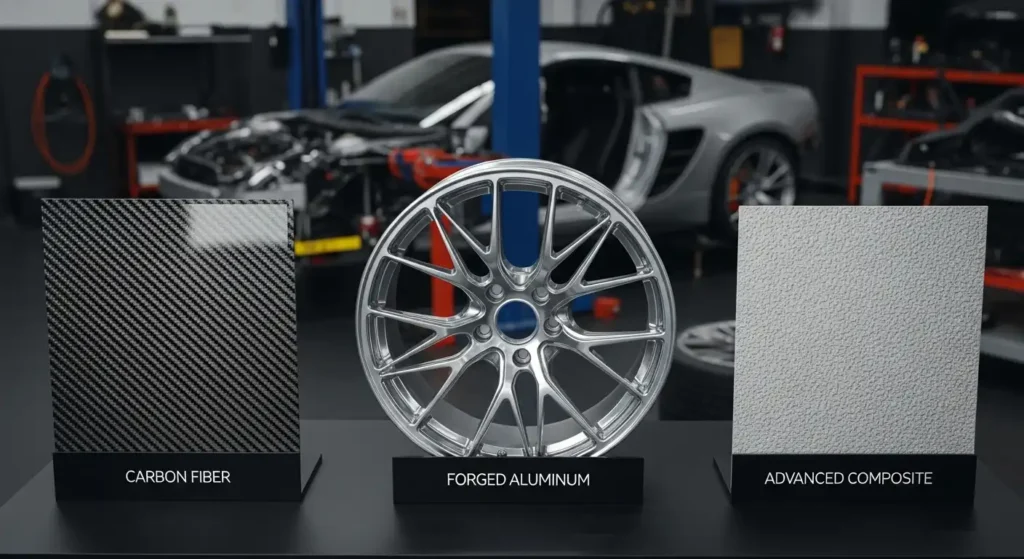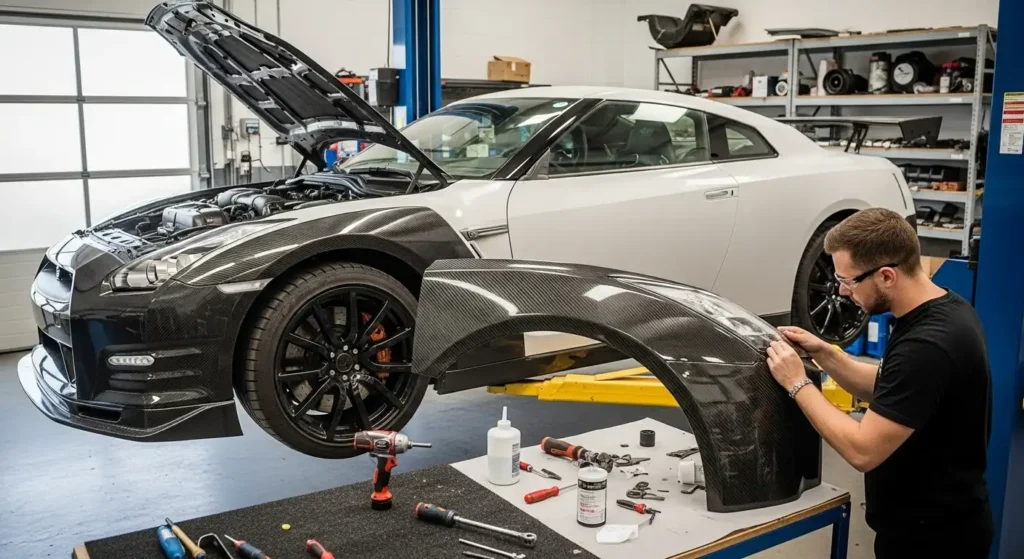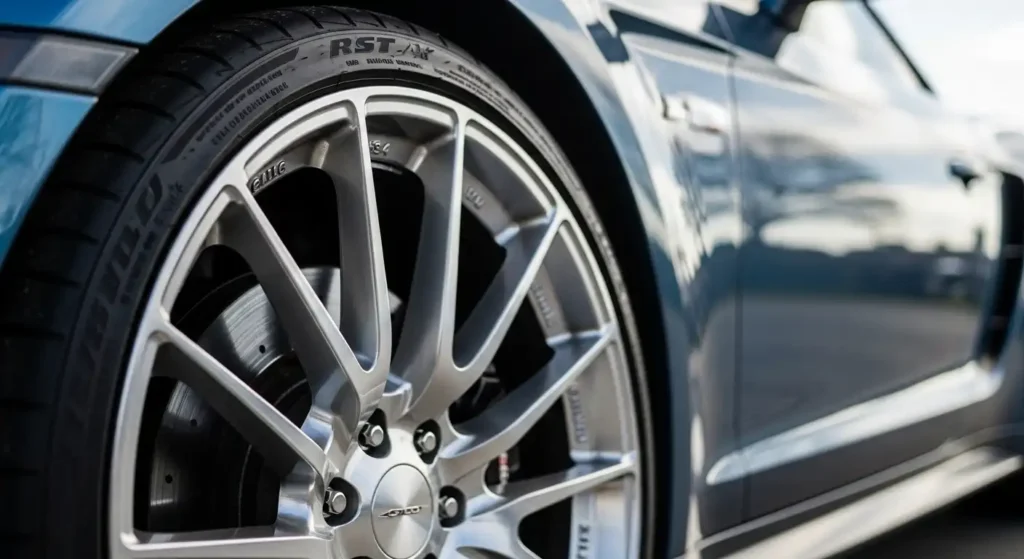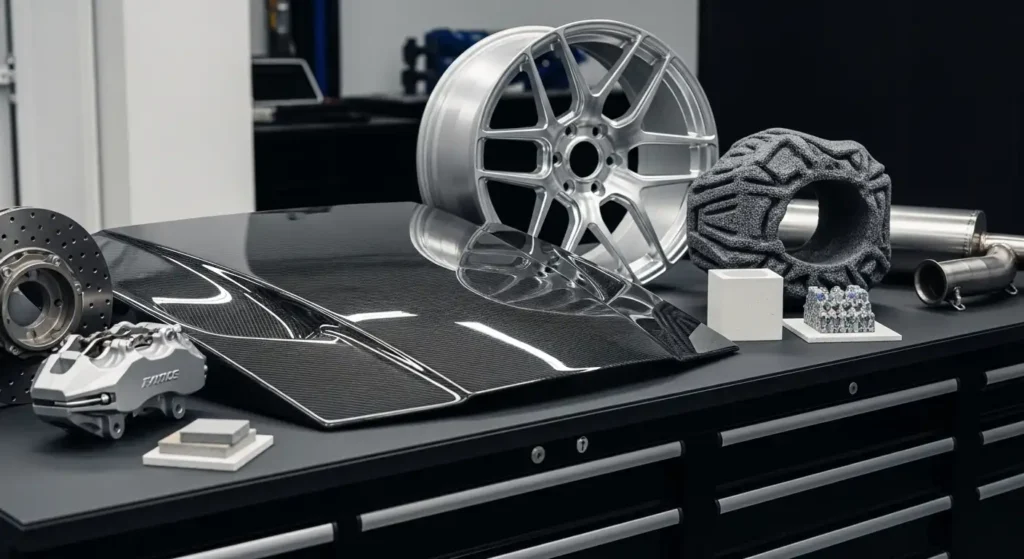Why Weight Reduction Matters in Car Mods
Before diving into specific materials, it’s important to understand why weight is such a critical factor in performance. Every pound shed from a vehicle improves its power-to-weight ratio, which directly affects acceleration. Lighter vehicles also require less braking force, improve tire grip efficiency, and reduce strain on suspension components.
Consider this simple math: a 100-pound weight reduction in a 3,200-pound sports car can yield performance gains comparable to adding 10-15 horsepower, depending on drivetrain efficiency. That’s why weight savings are often called the “hidden horsepower.”
Areas Where Weight Reduction Counts
- Rotational Mass: Lighter wheels, brake rotors, and driveshafts reduce inertia, leading to quicker acceleration and improved handling.
- Unsprung Mass: Weight outside of the suspension system (wheels, tires, brakes) has an outsized impact on ride and cornering dynamics.
- Overall Vehicle Mass: Reductions in body panels, interior components, and chassis materials improve fuel efficiency and agility.
 Carbon Fiber: The Icon of Lightweight Strength
Carbon Fiber: The Icon of Lightweight Strength
No material is more closely associated with modern performance mods than carbon fiber reinforced polymer (CFRP). Its distinctive woven pattern has become a symbol of high-tech engineering. But carbon fiber is more than just aesthetics—it delivers unmatched strength-to-weight ratios.
Properties of Carbon Fiber
- Strength-to-Weight Ratio: Up to five times stronger than steel while weighing significantly less.
- Corrosion Resistance: Unlike steel or aluminum, carbon fiber does not rust.
- Design Flexibility: Can be molded into complex shapes ideal for aerodynamic parts.
Common Carbon Fiber Mods
- Body Panels: Hoods, trunks, fenders, roofs, and doors.
- Aero Components: Spoilers, splitters, diffusers, and canards.
- Interior Parts: Dashboards, center consoles, and trim pieces.
Advantages of Carbon Fiber
The performance gains are obvious: lighter panels and aero parts reduce total weight while improving downforce and stability. In racing, carbon fiber hoods and roofs often reduce center-of-gravity height, further enhancing cornering.
Drawbacks
Carbon fiber is not without downsides. It can be brittle under certain impacts, leading to cracking rather than bending. Repair costs are higher, and authentic carbon fiber is expensive, leading to many cheaper “carbon-look” alternatives that offer no weight savings.
 Forged Aluminum: Strength Meets Practicality
Forged Aluminum: Strength Meets Practicality
While carbon fiber often dominates conversations, forged aluminum remains a staple in performance builds. Forging creates a denser, stronger metal structure than casting, allowing thinner designs without sacrificing strength.
Where Forged Aluminum Shines
- Wheels: Perhaps the most common forged aluminum upgrade. Lighter wheels reduce rotational and unsprung mass dramatically.
- Suspension Components: Control arms, knuckles, and mounts.
- Chassis Reinforcement: Subframes and strut towers.
Benefits of Forged Aluminum
Forged aluminum wheels, for example, can weigh 20-30% less than cast aluminum counterparts, improving acceleration, braking, and handling. Unlike carbon fiber, aluminum absorbs impacts better and can often be repaired.
Limitations
Forged aluminum parts are still heavier than carbon fiber. They can corrode if untreated, and high-quality forging processes make them expensive. Still, they remain a more accessible and versatile option for many enthusiasts.
 Advanced Composites: The Future of Lightweight Mods
Advanced Composites: The Future of Lightweight Mods
Beyond carbon fiber and aluminum, the automotive world is embracing advanced composites. These materials blend fibers like aramid (Kevlar) or basalt with resin matrices, or integrate nanomaterials for enhanced performance.
Examples of Advanced Composites
- Kevlar-Reinforced Parts: Extremely impact resistant, ideal for skid plates and protective components.
- Basalt Fiber: Derived from volcanic rock, offering heat resistance and vibration damping.
- Carbon-Kevlar Hybrids: Combine lightweight stiffness of carbon with Kevlar’s toughness.
Applications in Car Mods
These composites are increasingly found in motorsports, especially endurance racing where durability is as important as weight savings. Expect to see more hybrid composites available for aftermarket body kits, underbody protection, and even interior structures.

Comparing Carbon Fiber, Forged Aluminum, and Advanced Composites
| Material | Weight Savings | Strength | Cost | Durability | Best For |
| Carbon Fiber | Excellent | Very High | High | Moderate | Aero parts, body panels |
| Forged Aluminum | Good | High | Moderate | High | Wheels, suspension |
| Advanced Composites | Excellent | Varies | High to Very High | Very High | Specialized parts, racing |
Cost Considerations
Lightweight materials deliver performance, but they come at a price. A carbon fiber hood might cost three to five times more than a steel one. Forged wheels can easily exceed $3,000 per set, and advanced composites are often custom-order items with premium pricing. Enthusiasts should balance performance goals with budget realities.
Hidden Costs
- Specialized installation: Some composites require expert fitting.
- Repair challenges: Damaged carbon fiber often requires replacement rather than repair.
- Maintenance: Aluminum needs protective coatings; composites may require UV protection.
Real-World Case Studies
 Motorsports Applications
Motorsports Applications
In Formula 1, nearly every body component is carbon fiber. NASCAR increasingly uses composites for safety panels. Forged aluminum wheels dominate GT racing due to impact resilience.
Street Performance Builds
Many street tuners start with forged wheels for immediate gains, then add carbon fiber body panels for aesthetics and further weight reduction. Composites remain rare but are gaining traction among high-end builders.
Final Thoughts
Lightweight materials are reshaping the performance tuning landscape. Whether it’s carbon fiber’s high-tech allure, forged aluminum’s practical strength, or advanced composites’ cutting-edge potential, enthusiasts now have more choices than ever. The key is matching material choice to performance goals and budget.
For most street builds, forged aluminum wheels and select carbon fiber aero parts offer excellent balance. For track-focused or competitive racing, advanced composites provide the ultimate performance edge. Whichever path you choose, remember: every pound saved is another step toward a faster, more responsive, and more exciting ride.

 Forged Aluminum: Strength Meets Practicality
Forged Aluminum: Strength Meets Practicality Advanced Composites: The Future of Lightweight Mods
Advanced Composites: The Future of Lightweight Mods